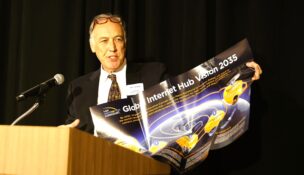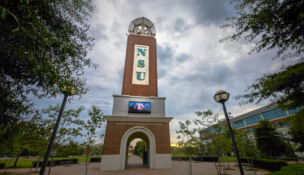Data center park headed for Surry County
Developer's ultimate plan calls for nuclear and hydrogen-fueled power plant
Kate Andrews //April 12, 2023//
Data center park headed for Surry County
Developer's ultimate plan calls for nuclear and hydrogen-fueled power plant
Kate Andrews //April 12, 2023//
A Middleburg developer plans to build at least 30 data centers on a 641-acre plot next to the Surry Nuclear Power Station in Surry County, with the possibility of a hydrogen and nuclear-powered green energy production facility in the future, the county announced Wednesday.
John Andrews, CEO of Middleburg-based Green Energy Partners LLC of Virginia, is a longtime Northern Virginia developer who built the Stonewall Energy Park in Loudoun County, including the Panda Stonewall Power Project, a natural gas-fueled 778-megawatt power station that uses wastewater from Leesburg to run the plant’s cooling tanks. Andrews also built Stonewall Secure, a business park near the Leesburg Executive Airport, as well as Fairfax County’s Spring Park Technology Center.
GEP is under contract to purchase the 641-acre property where the Surry Green Energy Center is set to be built, said Renee Chapline, a consultant with Surry County Economic Development.
According to Bill Puckett, Green Energy Partners’ vice president of strategic development, the company plans to build at least 30 data centers occupying three to five acres each, with construction starting in the next 18 months. The data centers would create revenue for the company to build a hydrogen-production facility on 10 to 20 acres and four to six small modular nuclear reactors (SMRs) “on the order of 35 acres” — a system that would create a renewable energy source in the next 10 to 15 years to run the data centers if approved by federal and state officials. The data centers would run on conventional energy sources in the meantime, Puckett said.
If all goes as planned, the Surry facility would serve as a backup energy source for Loudoun County data centers, where 70% of the world’s data traffic passes.
Andrews is privately funding the data centers, but the company is currently interviewing prospective customers, and tech investors are “banging on our door,” Puckett says. GEP is collaborating with the U.S. Department of Energy’s Idaho National Laboratory and Surry County, and the company is also having conversations with SMR vendors, data center builders and hydrogen power experts. The company expects to create 3,000 direct and indirect jobs in the Surry area, although some may come in 10 to 15 years, if all parts of the project move forward.
SMRs have come up in Virginia’s energy sector before; in 2022, Gov. Glenn Youngkin called for the country’s first small modular reactor to be built in Southwest Virginia within 10 years as part of the state’s strategy to meet Virginia Clean Economy Act goal of 100% carbon-free power sources by 2050. A bill to conduct an SMR pilot program failed this year in the Virginia General Assembly, but nuclear energy is still a hot topic among state energy stakeholders. Youngkin anticipates that it would take about 10 years to build a functional SMR in Southwest Virginia, although Puckett says that depending on the model, an SMR could be up and running in five years in Surry. Although the only working commercial SMR in the world is in Russia, many countries are testing models.
The data center part of the project is fairly straightforward, and it’s a major deal for Surry County, Chapline said. GEP did not seek state tax incentives, she noted, although the governor’s office and the Virginia Economic Development Partnership have been briefed on GEP’s plans. She expects groundbreaking on the data center park to take place in about a year.
Puckett said Wednesday that ultimately the Surry Green Energy Center would use SMRs to heat water to 800 degrees, splitting the water into oxygen and hydrogen with the use of an electrolyzer that turns it into carbon-free hydrogen fuel. If built, the energy center would be the first of its kind in the United States. Surry was “ideal” for the development because it has plenty of available land and water, as well as fiber optics, gas lines, electric grid access and proximity to the Port of Virginia, Puckett said.
“Our objective is to create a model for the world,” Puckett said.
s

















